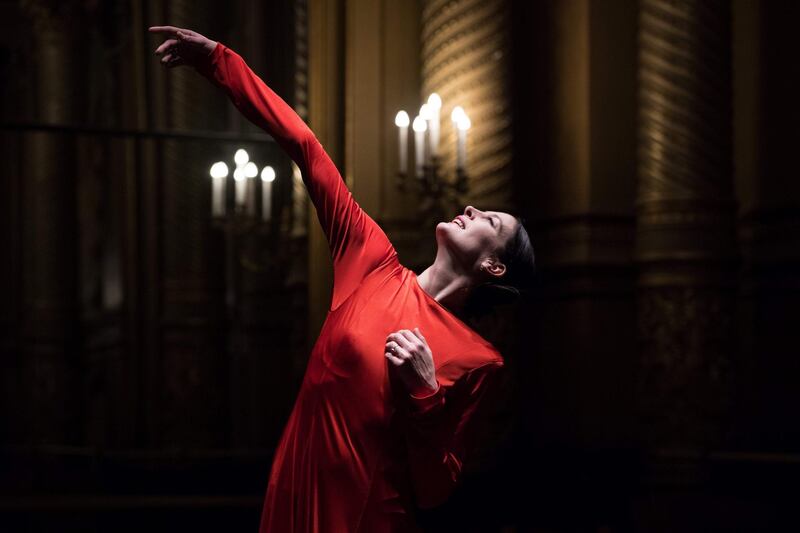Everything was against Marie-Agnes Gillot becoming a ballerina – never mind a great one.
She was too tall, broad-shouldered and, most of all, she had a double scoliosis, which sometimes gives her a hump when her back is swollen.
Yet the hump disappears as if by magic when Gillot takes to the stage.
"I have a limited time to stay standing, carried by my muscles and myself," the star says. She accepts "that with time passing I'll be going back into my corset, unless I accept the operation, the metal rod in my back".
On Saturday night Gillot closed an extraordinary chapter in modern French ballet when she took her final bow at the Paris Opera Ballet in Orpheus and Eurydice.
The last great French ballerina of her generation, she hid her problem from her teachers after leaving home at nine to go to ballet’s elite school in the French capital.
“When I arrived I thought, ‘who are these nasty skinny ladies?’” she remembers.
Not wanting to be thought of as handicapped, only her roommates knew her secret.
“Nobody gave me a free pass,” the dancer says of her long rise to the top. In fact, it was the opposite.
She did not make principal dancer until relatively late – she was 28 – by which time even the great choreographer Maurice Bejart had become exasperated, declaring, “she was the best they have, and finally they decided”.
Unlike her predecessor, the legendary Sylvie Guillem, whose passage she said was eased by Rudolf Nureyev, she had no such powerful mentor.
When Gillot was eventually named as a prima ballerina she made history as the first to be promoted in Paris for a modern piece.
“I think we have a hard time managing exceptional people in France who have a lot of energy, who have strong minds, who have abnormal abilities. And not just in ballet,” she says of her struggles.
Gillot was in no doubt that it was because she was “too talented that they would not accept any mistakes from me. They were super tough with me but with the middling types they said, ‘Don’t worry, we will let you through’.
“People before me who fell [during their final test] and people after too went on to be principal dancers while I could not make the smallest error.”
Only when she “ran away to New York” at 18 was she freed from “sweeping the floor” and given the roles she felt she deserved, she says.
“I’ve been described with adjectives like athletic, tall, atypical, rebel and punk since I was very little. But I don’t see it,” she says with a laugh.
“I see myself as a good soldier with a lot of discipline who has embraced all types of dance and never given classical or contemporary priority.”
Gillot, 42, has been branching out into film, fashion – working with Chanel, Hermes and Repetto – and art in recent years, even saving her sweat in little jars for a project. She also has a collection of poems in the pipeline.
______________________
Read more:
How the performers of La Perle stay in such impressive shape
José Carlos Martinez takes a poetic approach to Don Quixote
Madonna to direct film on Sierra Leone dancer
______________________
But as the only female French choreographer to have her work staged at the Paris Opera, dance still fires her. She is passionate about righting wrongs in dance education, saying that some elite schools stifle young dancers’ creativity.
“I would develop children’s curiosity by bringing them to the theatre to see great actors ... or even to fashion shows where they’ve made clothes out of bin bags so that they have creativity in them instead of just commands and orders all the time,” she says.
"We cannot break 10,000 children for one little prodigy. We have to cherish their imagination and not rein it in," she once told Paris Match magazine of ballet's failings.
Critics’ gripes about the lack of great charismatic dancers may be because of the way dancers are drilled. “You can be a great dancer but without personality,” she says. With her warm, throaty laugh, personality is not something Gillot lacks.
Having spent the past three months tearfully grieving her exit from an institution where she has spent most of her life, “now I just want to get on with it”, she laughed.
Still, there are memories that will remain with her forever, the greatest of which was “dancing with my son in my tummy at seven months. I would lift up my leg and he would get in the way”.
“But it is amazing what the body can do.”





